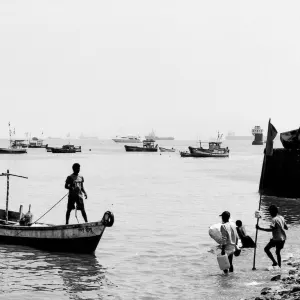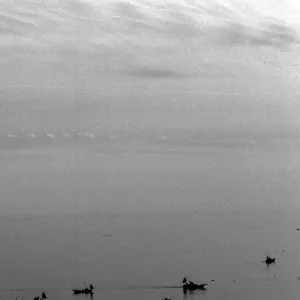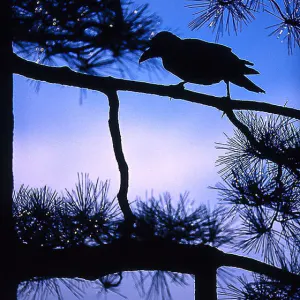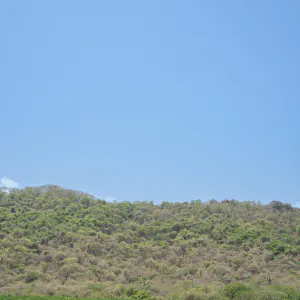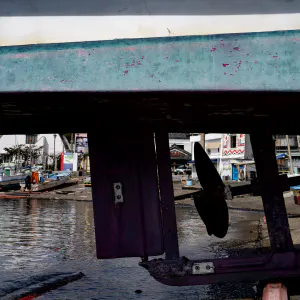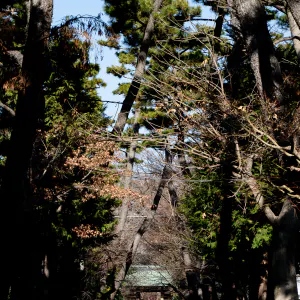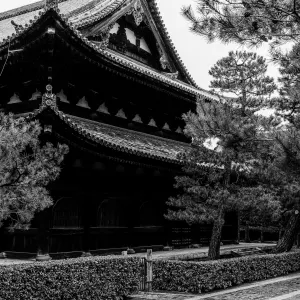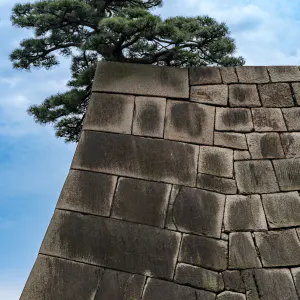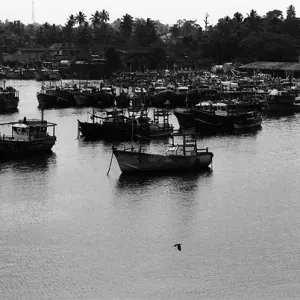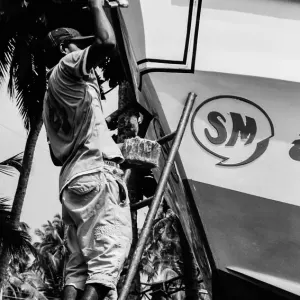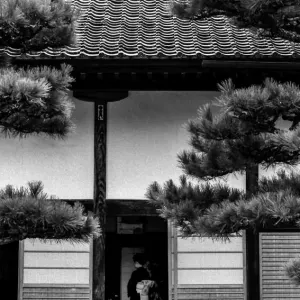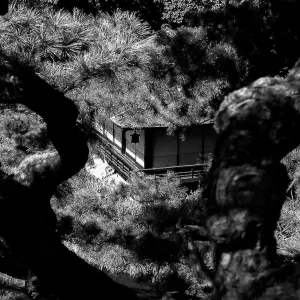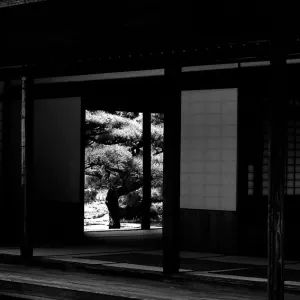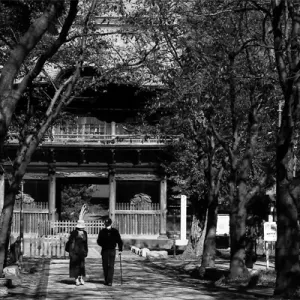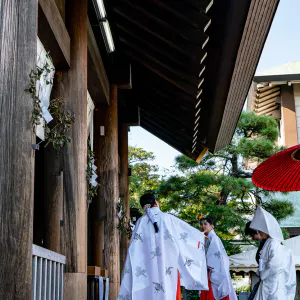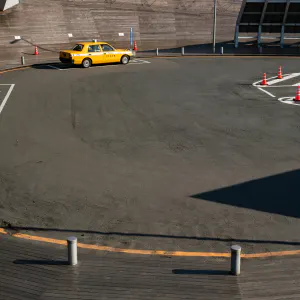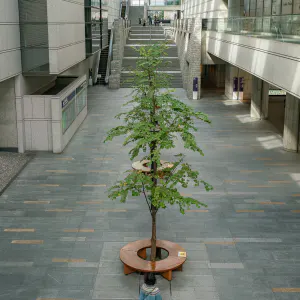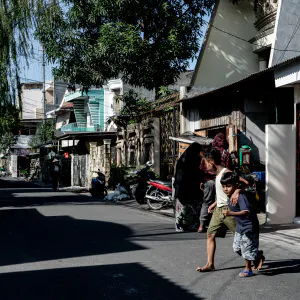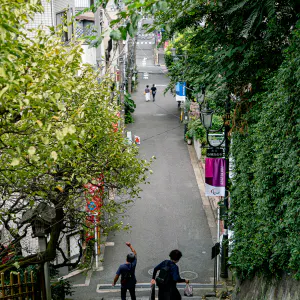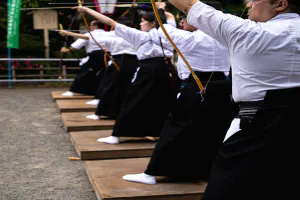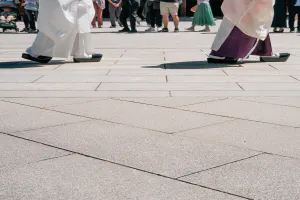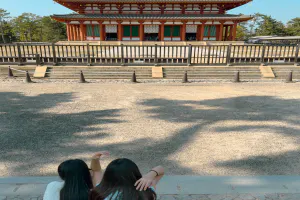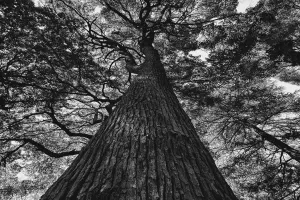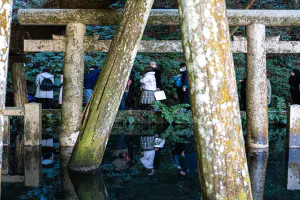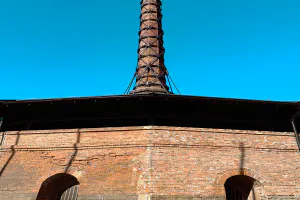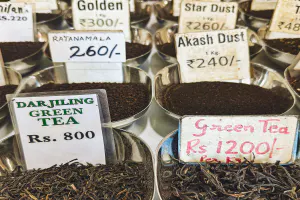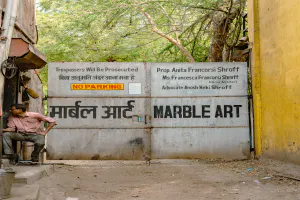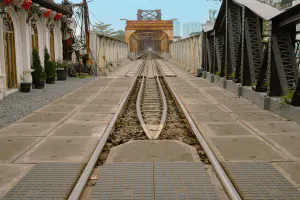Beyond the pine trees, a fishing boat floated in the water
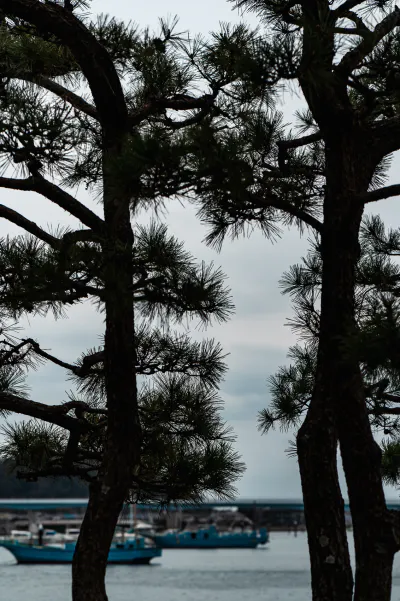
There is an inlet called Hirakata Bay near Kanazawa-Hakkei Station. It may seem surprising if you are not familiar with geography, but this used to be Mutsura-no-tsu, which flourished as an outer port of Kamakura during the Kamakura period (1185-1333). In fact, if you look at a map, you can easily reach Kamakura by crossing the mountains from Hirakata Bay. It seems that Mutsura-michi was connected to the center of Kamakura. This was surprising because when I think of ports in the Kamakura period, I tend to think of Wakae-no-shima, which was built on the Zaimokuza coast. It is likely that Wakae-no-shima and Mutsura-no-tsu were used separately, depending on the route of ships. Mutsura-no-tsu was used when ships traveled between the Tokyo Bay coast and the Tone River system to support the Kamakura Shogunate and Kamakura's consumption.
There is an island jutting out of Hirakata Bay, which has such a history, and a Shinto shrine sits on it. It is the Biwajima Jinja Shrine, where Hojo Masako, wife of Minamoto no Yoritomo, had the Chikubujima Benzaiten of Lake Biwa, whom she revered, invited to the shrine. Walking along the approach to the shrine, which stretches toward the sea, a small shrine pavilion appears. It is a small shrine pavilion with little sense of history. The surrounding area is a scenic spot known as Kanazawa Hachkei, but there are no traces of it. Beyond the pine trees surrounding the shrine, there was only fishing boats moored in the water.
| Jun 2023 IN THE CITY KANAGAWA | |
| FISHING BOAT PINE SHRINE SILHOUETTE YOKOHAMA |
PHOTO DATA
No
12511
Shooting Date
Mar 2023
Posted On
June 20, 2023
Modified On
August 10, 2023
Place
Yokohama, Kanagawa
Genre
Street Photography
Camera
SONY ALPHA 7R II
Lens
ZEISS BATIS 2/40 CF



